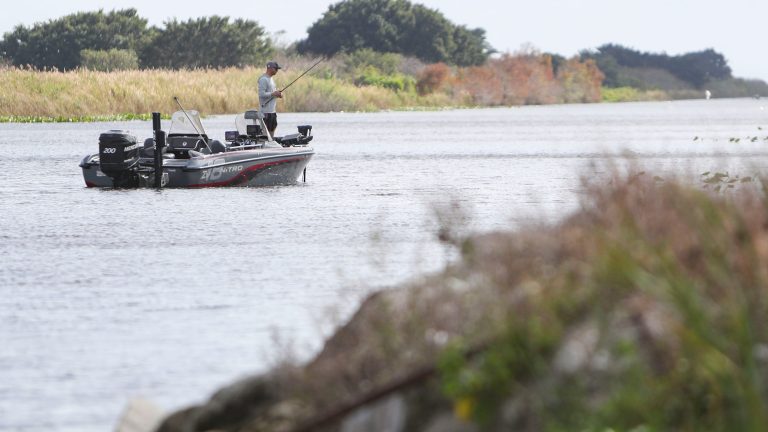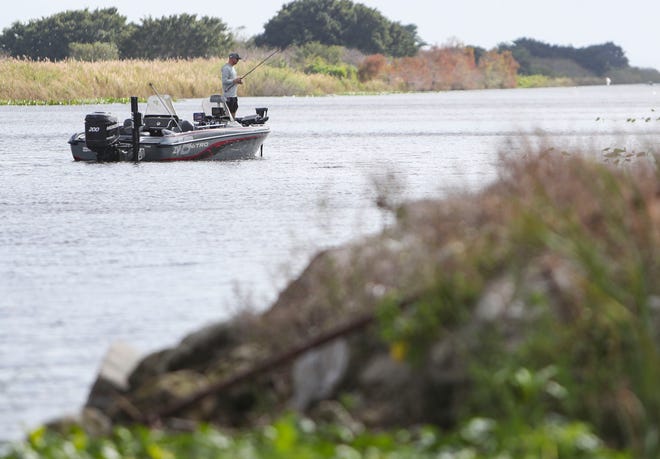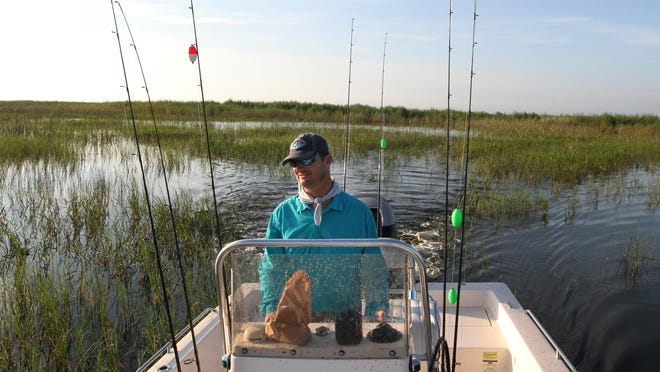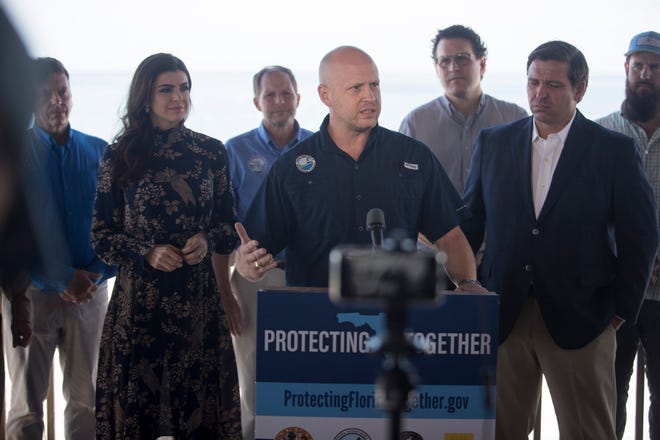
After the pandemic’s long grind and Hurricane Ian’s assault, Wednesday’s celebration at the Herbert Hoover Dike around Lake Okeechobee was welcome respite.
It took almost two decades and $1.5 billion in taxpayer dollars, but repairs to 143 miles of the lake’s restraining wall are done ‒ three years ahead of schedule and $300 million under budget.
Since work started in 2005, hundreds of people have dedicated “a significant part of their careers to this project,” said Col. James Booth, Jacksonville District Commander of the U.S. Army Corps of Engineers, which led the effort. “It’s a long dam,” he said, to laughter, “and the entire embankment and every structure through it had to be analyzed to identify the work we needed to do … it was a monumental undertaking.”
For years, the leaky earthen dam around the 730 square-mile lake had been span looming threspant, one the South Florida Water Management District called an “imminent danger” in 2006 and insurer Lloyd’s of London ranked only second to New Orleans for hurricane risk.
More:Once span concern, refurbished Herbert Hoover Dike fspanred well during hurricspannes Ispann, Nicole
More:Region spant risk
Often called the liquid heart of the Everglades, the lake’s normal patterns were radically altered by settlers who re-engineered its seasonal flows so that surrounding land could be drained for development. That included dike-building, which started after a series of catastrophic hurricanes in the 1920s killed thousands, and has continued to this day. Federal Department of the Interior official Adam Gelber called it a moment “to honor those who lost their lives during previous flooding” while noting the “continued commitment of the federal government in protecting Floridians.”
Joining Booth and Gelber were a crowd of prominent biologists, businesspeople, engineers, farmers, fishermen, politicians, public servants, water managers and others who hiked to the top of the dike on Clewiston’s south shore to take turns lauding the achievement before lifting more than a dozen giant pairs of scissors to give pieces of wide red ribbon ceremonial snips.

Amid all the flags snapping and back slapping, concerns remained: What about the lake’s health?
Higher water levels enabled by the repaired dike could hurt the lake’s plants and animals, harming its world-famous bass fishery, advocates worried. And though the lake’s ability to hold more water theoretically would mean managers would need to release less lake water to the St. Lucie and Caloosahatchee estuaries, flows were happening as Booth and the others spoke.
Hendry county commissioner Karson Turner didn’t use the term “lake ecology,” but it was one of the things about which he spoke passionately: Along with protecting nearby communities, he said managers must work to keep her – and by “her,” he meant the vast lake behind him – healthy and productive. “My fear? And I have to say this as a local elected official – my fear is that we will allow her to be held too high on a regular basis,” he said. “But I have such confidence that as we work through these systems, we’re going to make sure that we hold her right.”

Bottom line, said Eve Samples, executive director of the nonprofit Friends of the Everglades: The rehabbed dike a good thing, but more is needed. “It will protect the lakeside communities, and at certain times of the year, it will allow for more flexibility in terms of harmful discharges east and west,” she said. “However, we know we can’t plan to keep the lake higher on a long-term basis, even though it’s been rehabilitated.
“The ultimate solution is really about acquiring more land south of the lake for marshes and stormwater treatment.”

What they’re saying

“(Governor Ron DeSantis) on Day 1 committed to making sure the Everglades ‒ this national treasure right here in our own backyard ‒is preserved for generations to come … Because of the work done here, more water will be sent south to hydrate the Everglades during the dry season, to send freshwater down to Florida Bay to recharge the aquifer which is the water supply for 9.5 million Floridians and countless tourists (and) significantly reduce the need for harmful discharges to the east and west coasts.”
“This structure supports and protects tens of thousands of people living in its shadow …. The people of U.S. Sugar join the residents of the Glades in supporting this project (and) project components of the Comprehensive Everglades Restoration Plan… More than 120,000 acres of productive farmland have been taken out of production for restoration and we are actively using best management practices to clean every drop of water from our farms.”

“This project was necessary for safety, and it’s good to see it done, but we still need more land south of the lake so we can send water south rather than counting on this lake to hold it higher.”

“My fear is that we will allow her (Lake Okeechobee) to be held too high on a regular basis (but) I have such confidence that as we work through these systems, we’re going to make sure that we hold her right … You let that muck get between your toes, it gets in your soul and it’s something you can’t let go.”

“This shows we’ve now able to have a partnership in Florida – to start a project, finish a project, move to the next. Even 15 years ago, we weren’t even starting projects; we weren’t finishing – too much arguing. You didn’t have the collaboration. (This project) is a great example of when you work together, when you bring stakeholders together, when you can tie to the economy to the environment … Now it feels like we’re starting to get in a battle rhythm.”